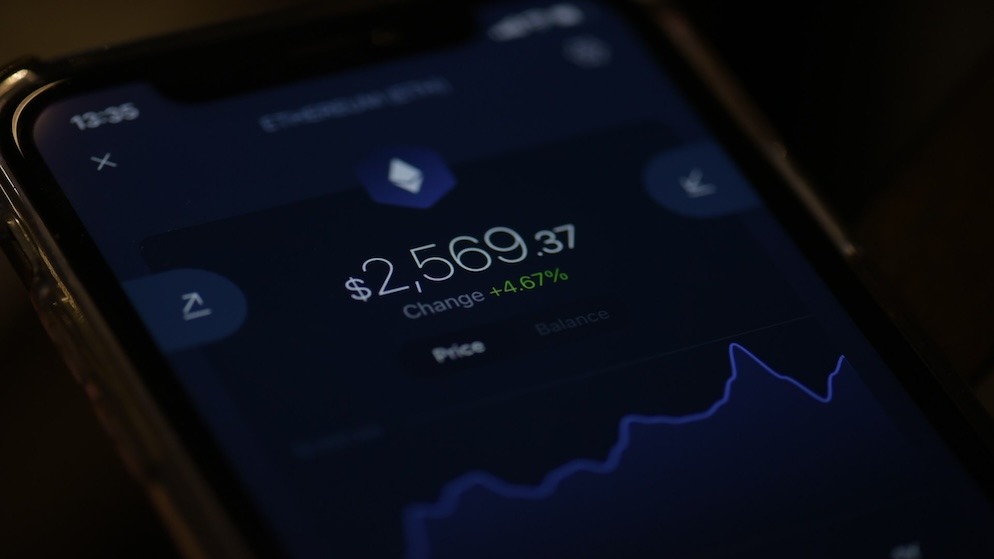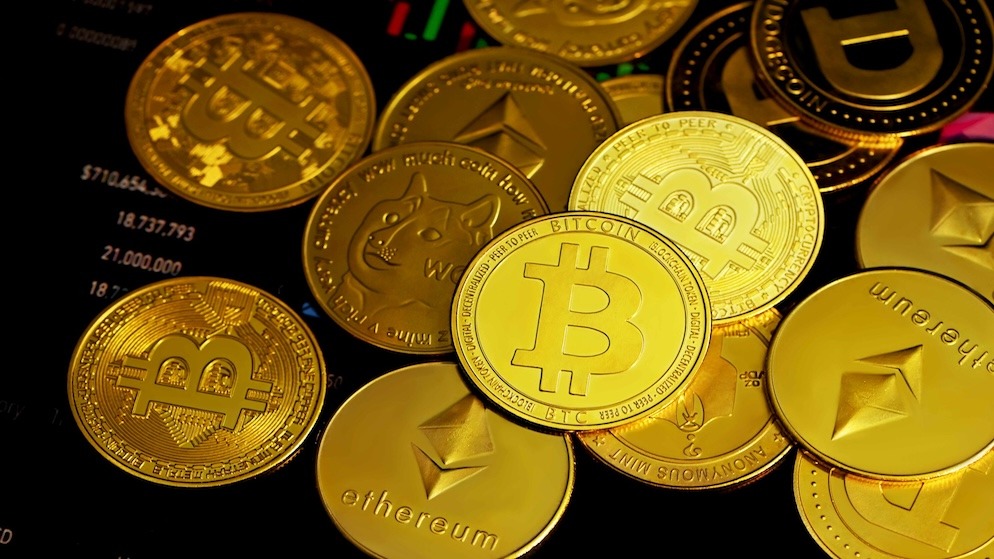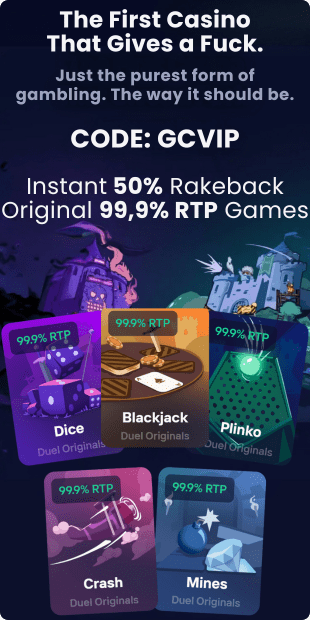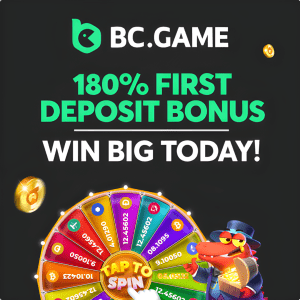
Introduction to Crypto Bundling
Understanding what is bundling in crypto is the first step toward mastering the complexities of modern decentralized finance and blockchain infrastructure. In the rapidly evolving world of digital assets, the term encompasses various mechanisms, ranging from market strategies used during token launches to technical solutions that scale networks. Whether you are a trader investigating a new coin or a developer looking at Layer 2 solutions, knowing how this process works provides the insight needed to navigate the space safely and efficiently.
This guide will explore every facet of the concept, ensuring you have a deep understanding of what is bundling in crypto, how it impacts transaction costs, and why it has become a controversial topic in trading circles. By the end of this extensive analysis, the mechanics of the technology will be fully explained, covering its role in account abstraction, market manipulation, and asset management. We will delve into the tools and the future of this innovation to provide a complete picture of the ecosystem.
Defining the Core Concept: What is Bundle in Crypto?
To grasp the full scope of the industry, one must first answer the foundational question: what is bundle in crypto? At its simplest level, a bundle is a grouping of multiple distinct items or transactions that are processed together as a single unit. When users ask about this term, they are often referring to the aggregation of transactions to ensure they are mined in a specific order within a blockchain block. This is distinct from asset bundling, where multiple tokens are sold together. Understanding the nuance of the concept is vital because the intent behind the bundle changes its nature.
In the context of technical infrastructure, the term refers to the packaging of user operations to save on gas fees and improve efficiency. Conversely, in the high-stakes world of token trading, what is bundle in crypto often refers to a sniper strategy used to acquire a large percentage of a token’s supply instantly. Therefore, the definition depends heavily on whether you are looking at the code that runs the network or the charts that track the prices. To fully appreciate the ecosystem, one must recognize that a bundle is a versatile mechanism used for both scaling legitimate applications and manipulating market movements.
The Mechanics of Market Manipulation: What is a Bundle Buy in Crypto?
A frequent topic of discussion among meme coin traders is what is a bundle buy in crypto. This term specifically relates to the launch phase of a new cryptocurrency. When a developer or a sophisticated trader wants to secure a large portion of the token supply before the public has a chance to buy, they utilize this strategy. Understanding the mechanics reveals the nature of modern “sniping.” The entity uses a block builder to package the transaction that adds liquidity to the market alongside dozens of buy transactions from different wallets into one single batch.
When investigating what is a bundle buy in crypto, it becomes clear that this ensures all the buy orders happen in the exact same block as the launch. To an outside observer, it might look like many different people bought the token, but knowing how this works allows you to see that it is likely one person controlling multiple wallets. This technique creates an artificial sense of volume and demand. Traders who do not understand these tactics often fall victim to schemes, buying in after the price has already been artificially inflated.
Furthermore, clarifying what is a bundle buy in crypto helps in risk assessment. If a single entity controls eighty percent of the supply through this method, they control the price. Therefore, learning to spot this behavior is a defensive skill. It allows investors to spot red flags immediately. The prevalence of tools like Jito on Solana has made understanding these buy strategies mandatory for anyone participating in decentralized exchange trading.
Unveiling the Hidden Supply: What is Bundle Holding in Crypto?
Closely related to the buying process is the concept of holdings. Investors often ask what is bundle holding in cryptowhen analyzing the distribution of a token. This refers to the aggregate amount of tokens held by a cluster of wallets that were funded by the same source or bought in the same initial transaction group. Determining this metric is crucial for spotting a potential “rug pull” or dump. If twenty wallets each hold one percent of the supply, it might look decentralized, but if they are all connected, the true answer regarding bundle holding is that one person holds twenty percent.
Analyzing what is bundle holding in crypto requires looking at on-chain data to find connections between addresses. Tools that visualize these connections help answer this question by showing the clusters of wallets. When you identify these clusters, you can make better decisions about whether a project is safe to invest in. A high percentage in connected holdings usually indicates a high risk of centralized dumping.
Therefore, the question of what is bundle holding in crypto is actually a question about decentralization and safety. Projects with low concentration are generally considered fairer. Conversely, ignoring this data can lead to significant financial losses if the controller decides to sell their entire stash at once. It is the hidden metric that defines the true ownership structure of a new token.
The Technical Backbone: What is a Bundler in Crypto?
Moving away from trading and into infrastructure, we must address the question: what is a bundler in crypto? In the realm of Account Abstraction, specifically under the ERC-4337 standard, the bundler plays a critical role. When exploring this topic, we are looking at a specialized node that listens to the user operations mempool. Unlike standard transactions, these user operations need an intermediary to package them. This intermediary is the bundler.
The node collects multiple user operations and bundles them into a single transaction that is then submitted to the blockchain. Understanding what is a bundler in crypto explains how we can have gasless transactions and social recovery wallets. The operator pays the gas fee in native tokens (like ETH) and is compensated by the user or a paymaster. Thus, the bundler is essentially a transaction facilitator that improves the user experience.
Without understanding what is a bundler in crypto, it is difficult to grasp the future of Ethereum scaling. These actors are incentivized to operate efficiently, ensuring that user intents are executed on-chain. So, what is this entity? It is the engine that powers the next generation of smart contract wallets, making the blockchain more accessible to non-technical users.
Deep Dive into Infrastructure
While the previous section defined the actor, we must also explore the broader concept: what is bundler in cryptoregarding network topology? The bundler is not just a single entity but a component of a decentralized infrastructure. When developers ask about this, they are often inquiring about the software and the incentives that drive these nodes. The system validates the signatures of the user operations and ensures that the smart contract wallet has enough funds to pay for the execution.
Investigating what is bundler in crypto reveals that it effectively replaces the traditional role of the external owner account in initiating transactions. This abstraction is why the answer is so vital for mass adoption. It removes the need for users to hold the native gas token of a chain, provided there is an actor willing to accept another form of payment.
Furthermore, regarding censorship resistance, the question of what is bundler in crypto becomes important. If the list of operators is small, the network could become centralized. Therefore, a robust ecosystem requires many entities acting in this capacity. Ultimately, it is a study in economic incentives and cryptographic verification that allows for a more flexible transaction model on the blockchain.

Clarifying Terminology: What is Bundle in Crypto vs. Bundling
It is often necessary to distinguish between the noun and the verb. We have explored the noun, but let us revisit what is bundle in crypto as an object. A bundle is a data packet. In the context of Flashbots or MEV (Maximal Extractable Value), knowing this definition means understanding that this packet of transactions bypasses the public mempool. It goes directly to the miner or validator. This is distinct from the general public queue.
When a trader asks what is bundle in crypto, they are asking about a privileged set of instructions. These instructions carry a bribe or a tip to the validator to ensure they are included. Therefore, the term refers to a mechanism for ordering transactions to profit from arbitrage or to secure a token launch. The contents are atomic, meaning either all transactions happen, or none of them do. This atomicity is the core feature.
Without this atomicity, the strategies used by arbitrageurs would be too risky. Thus, the answer to what is bundle in crypto lies in the guarantee of execution order. It provides certainty in an uncertain environment. Whether used for good (arbitrage efficiency) or bad (sniping), it is a powerful tool in the hands of sophisticated actors.
Variations in Phrasing
Users searching for information often query what is a bundle in crypto to understand specific product offerings. For example, some exchanges offer a “crypto bundle” which is a basket of assets. In this context, the term refers to a portfolio product. It is similar to an ETF where you buy one asset that represents a collection of others. This simplifies investing for beginners.
However, in the DeFi context, what is a bundle in crypto brings us back to the grouping of transactions. It is important to look at the context. If you are on an exchange, it likely means a diversified investment. If you are looking at Etherscan, it refers to a Flashbots transaction. This dual meaning is why clarity is needed.
Ultimately, what is a bundle in crypto represents aggregation. Whether it is aggregating assets for investment or aggregating transactions for execution, the principle remains the same. It is about efficiency and reducing the complexity of individual actions. Understanding the term in all its forms allows a user to navigate both centralized and decentralized platforms with confidence.
The Role of Aggregation
Returning to our primary keyword, we must expand on what is bundling in crypto regarding Layer 2 scaling solutions. In this context, the process involves rolling up thousands of transactions into a single proof. This is the fundamental technology behind Optimism and Arbitrum. Here, the technique is the savior of Ethereum, allowing it to process thousands of transactions per second.
By moving computation off-chain and only submitting the data to the main chain, the network becomes faster and cheaper. Thus, what is bundling in crypto is the key to blockchain scalability. It reduces the data availability requirements on the main network. Without this form of aggregation, blockchains would remain slow and expensive.
Therefore, the answer to what is bundling in crypto is multifaceted. It includes the predatory practices of snipers and the visionary engineering of scaling solutions. Both rely on the same fundamental concept of grouping items together. Understanding the concept allows one to see the duality of blockchain technology—how the same mechanism can be used to extract value from users or to create value for them.
Investigating the Past: What is Bundled in Crypto?
When analyzing a transaction history, one might ask what is bundled in crypto regarding a specific block. Looking at historical data allows researchers to see which transactions were part of a private group. Identifying these transactions helps in understanding past market movements. If a massive price crash occurred, checking the blocks might reveal a coordinated attack or a massive liquidation event.
Forensic analysis of the blockchain often revolves around determining what is bundled in crypto. It helps in tracking funds and identifying the strategies of MEV bots. When you can see these grouped transactions, you can see the “dark forest” of the blockchain where bots battle for arbitrage opportunities. This transparency is unique to crypto.
Furthermore, audit firms look at what is bundled in crypto to ensure that protocols are not being exploited. By understanding the composition of these groups, they can patch vulnerabilities. Thus, answering this question is essential for the security and integrity of the entire ecosystem.

Plural Perspectives: What is Bundles in Crypto?
The terminology often shifts to the plural, leading users to ask what is bundles in crypto. This usually refers to the constant stream of these aggregated transaction sets being proposed to validators. In a high-frequency environment, understanding the term implies looking at the flow of the network. Validators select the most profitable sets to include in their blocks.
Therefore, what is bundles in crypto is effectively a marketplace of transaction sets. Searchers compete to create the most valuable packages. This competition drives the efficiency of the market. When asking about the plural form, one is inquiring about the supply side of the block-building market.
This dynamic environment is what keeps prices aligned across decentralized exchanges. The answer to what is bundles in crypto describes the invisible hand that corrects price discrepancies through arbitrage. While often invisible to the average user, the constant processing of these items is what keeps the DeFi economy functioning smoothly.
Understanding the Search Term: Bundle Meaning in Crypto
Many newcomers start their journey by searching for the bundle meaning in crypto. As we have established, the definition varies by context. It is essential to clarify that the meaning is not static. In 2020, it might have referred primarily to asset baskets. In 2025, the meaning is heavily weighted toward MEV and transaction ordering.
To fully grasp the bundle meaning in crypto, one must be aware of the evolution of the space. As technology advances, new forms of aggregation emerge. For instance, cross-chain grouping is a developing concept. The definition will likely expand to include transactions that span multiple blockchains simultaneously.
Therefore, keeping up with the bundle meaning in crypto requires continuous learning. It is a term that adapts to the latest innovations and the latest exploits. A comprehensive dictionary of DeFi would have multiple entries under this heading to capture these nuances.
Market Implications: Bundles in Crypto
The existence of bundles in crypto has changed how trading works. Retail traders must understand that they are competing against bots that use these tools to front-run or sandwich their transactions. The presence of these private groups means that the public mempool is no longer the only place where transactions live before confirmation.
This “private mempool” created by bundles in crypto has led to a fairer market in some ways, as it prevents generalized front-running, but it has centralized power among block builders. The debate focuses on how to democratize access to these tools. If only a few have access, the market becomes skewed.
Thus, the study of bundles in crypto is a study of market structure. It reveals who has the advantage and why. For a trader to be successful, they must account for the impact of these mechanisms on their slippage and execution price.
Security and Verification: Bundle Check Crypto
A critical practice for any meme coin trader is to perform a bundle check crypto on new launches. This process involves using software to scan the first few blocks of a token’s life. If the check reveals that a large percentage of the supply was bought in the first block by connected wallets, it is a major warning sign.
Tools like Bubblemaps are essential for this bundle check crypto process. They visualize the data, making it easy to see the clusters. Performing this verification should be part of the due diligence process for every high-risk investment. Ignoring the need for a check is a common reason for significant losses in the degen trading space.
Furthermore, a bundle check crypto can reveal if the liquidity has been tampered with. By making this a standard habit, traders can protect themselves from the most common predatory tactics in the industry.
General Usage: Bundle Crypto
The term bundle crypto is often used as a shorthand in casual conversation. Traders might say “did you see that launch?” referring to a sniped token. Or they might ask “is there a bundle crypto app?” referring to portfolio management. The versatility of the keyword highlights its ubiquity.
When people discuss bundle crypto strategies, they are usually talking about advanced DeFi tactics. However, the term can also refer to the literal grouping of keys or data. It is a catch-all phrase. The context usually dictates whether it refers to a scam or a feature.
As the industry grows, the usage of bundle crypto will likely become more specific. But for now, it remains a broad umbrella covering a wide array of activities.
Platform Specifics: Bundl Crypto
Occasionally, users might encounter the term bundl crypto. This can refer to specific platforms or misspellings of the general term. For instance, there have been projects and apps with similar names, which focused on social payments. When users search for this spelling, they might be looking for these specific legacy apps.
However, in the context of the broader ecosystem, bundl crypto is often just a variation of the search for bundling tools. If a user searches for tools using this spelling, they are likely looking for Jito or Flashbots. It is important to guide these searches toward the correct technical concepts.
Whether spelled correctly or as bundl crypto, the underlying interest is usually in aggregation and efficiency. Addressing the query ensures that even those with imperfect information can find the resources they need.
Tools for the User: Bundle App Crypto
There is a growing demand for a bundle app crypto that simplifies these complex processes. Such an app could be a portfolio tracker that groups assets. Or, it could be a front-end interface for sending aggregated transactions.
Currently, most “bundling” is done via scripts, but a user-friendly bundle app crypto would lower the barrier to entry. Imagine an application that allows a regular user to participate in a token launch fairly using these mechanics. This is the holy grail for many retail traders.
On the investment side, a bundle app crypto that allows users to buy “The DeFi Bundle” or “The Gaming Bundle” with one click is already a reality on some centralized exchanges. This type of application drives adoption by simplifying the investment thesis for newcomers.

Final Thoughts
The question of what is bundling in crypto opens the door to the inner workings of the blockchain. From the predatory tactics of token snipers to the revolutionary scaling of Layer 2 networks, this is a fundamental mechanism. It represents the maturation of the industry, moving from simple, singular transactions to complex, aggregated operations.
Whether you are performing a security check to stay safe or utilizing a bundler to save on gas, understanding this concept is non-negotiable. As the technology evolves, the process will likely become even more integrated, eventually becoming invisible to the end user, yet remaining the engine that powers the entire decentralized web.
Frequently Asked Questions
Q: What is bundling in crypto?
A: Bundling in crypto refers to the process of grouping multiple transactions or operations together to be executed as a single unit. This is done for various reasons, including saving on gas fees, improving scalability (via rollups), or executing complex trading strategies like sniping token launches.
Q: What is a bundler in crypto?
A: A bundler is a specialized node or actor, particularly in the context of Account Abstraction (ERC-4337), that collects user operations, packages them into a transaction, and submits them to the blockchain. They facilitate gasless transactions and improved user experiences.
Q: How does a bundle buy in crypto work?
A: This occurs when a trader or developer uses a block builder to package a liquidity addition transaction and multiple buy transactions into the same block. This allows them to buy a large portion of a token’s supply the instant it launches, often before other traders can react.
Q: What is the purpose of a bundle check crypto?
A: This is an investigative process used to detect if a token launch was manipulated. By analyzing the first block of trading, users can see if a group of wallets bought up the supply simultaneously, which is a common indicator of a potential “rug pull” or centralized control.
Q: What is bundle holding in crypto?
A: This term refers to the percentage of a token’s total supply that is held by a cluster of wallets connected to the initial launch transaction. High holdings suggest that a single entity controls a dangerous amount of the token supply.
Q: Can I use a bundle app crypto for investing?
A: Yes, there are applications and exchanges that offer “crypto bundles,” which are baskets of different cryptocurrencies grouped together. This allows investors to buy a diversified portfolio (e.g., a Metaverse or DeFi basket) in a single transaction.
Q: What is the difference between bundles in crypto and rollups?
A: While both involve grouping transactions, “bundles” often refer to MEV and trading strategies on Layer 1 to order transactions specifically. “Rollups” are Layer 2 scaling solutions that group thousands of transactions off-chain and submit a proof to the main chain to reduce costs and increase speed.
Q: Is bundling in crypto illegal?
A: The technical capability is not illegal. However, using it for market manipulation, such as cornering supply to defraud investors (rug pulls), can be illegal depending on the jurisdiction. Technical aggregation for scaling or account abstraction is a legitimate and encouraged part of blockchain infrastructure.





